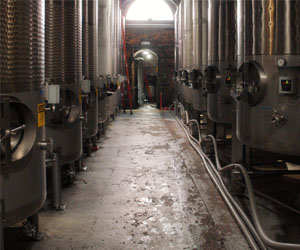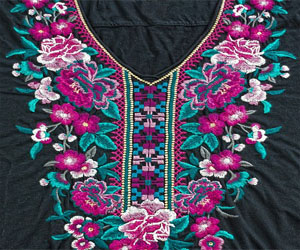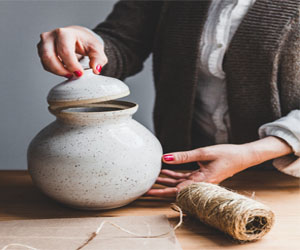


Beauty From The Earth, For The Earth

Natural cosmetics have gained immense popularity in recent years as consumers increasingly seek clean and sustainable beauty alternatives. These products, which rely on the power of nature, offer a range of benefits for both our skin and the environment. In this article, we'll delve into the world of natural cosmetics and why they've become the preferred choice for conscientious consumers.
Nature's Bounty: Natural cosmetics are crafted from botanical and organic ingredients such as plant extracts, essential oils, and minerals. These clean ingredients nourish the skin, providing a safer and more holistic approach to beauty.
Clean Formulations: Natural cosmetics are free from harsh chemicals, synthetic fragrances, and toxic additives commonly found in conventional cosmetics. They prioritize the use of clean, safe, and non-toxic ingredients, reducing the risk of skin irritations, allergies, and long-term health concerns.
Environmental Consciousness: Many natural cosmetics brands embrace sustainable and eco-friendly practices. They focus on sourcing ingredients responsibly and use recyclable or biodegradable packaging, significantly reducing their environmental impact.
No Animal Testing: A significant portion of natural cosmetics is cruelty-free, meaning they don't test their products on animals. This aligns with the principles of ethical consumerism and compassionate treatment of animals.
Transparency And Accountability: Natural cosmetics brands are known for their transparency. They provide detailed information about their ingredients, sourcing, and production processes. This allows consumers to make informed choices about the products they apply to their skin.
Safer Makeup Alternatives: Natural cosmetics extend beyond skincare to include makeup products like foundation, lipstick, and mascara. Clean cosmetics offer safer alternatives for enhancing beauty without compromising health or the environment.
Holistic Beauty: Natural cosmetics encourage a holistic approach to beauty. They emphasize that beauty is not merely skin-deep and is deeply intertwined with overall well-being, mental health, and self-confidence.
Suitable For Sensitive Skin: Natural cosmetics products tend to be gentler on sensitive skin. Free from harsh chemicals and synthetic fragrances, they are less likely to cause skin irritations, allergies, or breakouts.
Effective Results: It's a common misconception that natural cosmetics are less effective than their conventional counterparts. However, natural ingredients like argan oil, aloe vera, and chamomile are well-regarded for their therapeutic and rejuvenating effects.
Empowerment: Opting for natural cosmetics is a statement of empowerment. It represents a commitment to self-care, well-being, and a desire to use products that nourish the skin, respect the environment, and enhance self-confidence.
Natural cosmetics offer a healthier and more sustainable alternative to conventional beauty products. By embracing clean beauty, individuals can care for their skin with products that are both safe and effective while minimizing their impact on the environment.
In a world where conscious consumerism and holistic self-care are on the rise, natural cosmetics have become more than just a choice; they are a commitment to healthier, more radiant skin, and self-confidence. So, why not embrace natural cosmetics and be part of a movement that values both your well-being and the health of the planet? Your skin and the Earth will thank you for it.






Nurturing Mind And Body
 Crafting also enhances cognitive abilities. It stimulates your brain and challenges it in new and exciting ways. Whether you're following a knitting pattern or solving a design problem in woodworking, crafting requires problem-solving skills, spatial awareness, and attention to detail. Over time, these mental exercises can help sharpen your mind and keep it agile.
Crafting also enhances cognitive abilities. It stimulates your brain and challenges it in new and exciting ways. Whether you're following a knitting pattern or solving a design problem in woodworking, crafting requires problem-solving skills, spatial awareness, and attention to detail. Over time, these mental exercises can help sharpen your mind and keep it agile.
A Timeless Tapestry Of Tradition And Artistry
 Cultural Significance: Pottery has held a profound cultural significance in the history of human civilization. In many ancient cultures, pottery was not just a craft; it was an art form deeply intertwined with rituals, spirituality, and daily life. From sacred vessels used in religious ceremonies to utilitarian items for food storage and preparation, pottery has played multifaceted roles in cultural practices.
Cultural Significance: Pottery has held a profound cultural significance in the history of human civilization. In many ancient cultures, pottery was not just a craft; it was an art form deeply intertwined with rituals, spirituality, and daily life. From sacred vessels used in religious ceremonies to utilitarian items for food storage and preparation, pottery has played multifaceted roles in cultural practices.
Global Diversity: What makes pottery culture so fascinating is its global diversity. Each culture has developed its own unique styles, techniques, and traditions in pottery. From the intricate porcelain of China and the terracotta of the ancient Greeks to the vibrant Talavera ceramics of Mexico and the earthy, rustic pottery of Native American tribes, the world of pottery is a testament to the ingenuity and creativity of humanity.
Cultural Identity: Pottery often reflects the identity and values of a culture. For example, Native American pottery features distinct geometric designs and motifs that are deeply rooted in their cultural heritage. Japanese ceramics embody the principle of wabi-sabi, celebrating imperfection and the beauty of transience.
A Journey Through Innovation And Diversity
 Diverse Terroirs: One of the remarkable features of New-World wines is the wide range of terroirs they encompass. New-World wine regions can be found across the globe, from the high-altitude vineyards of Argentina to the cool-climate wine regions of Oregon. This diversity allows for the cultivation of various grape varieties, each suited to specific terroirs. As a result, New-World wines offer an array of flavors and styles that cater to a broad spectrum of preferences.
Diverse Terroirs: One of the remarkable features of New-World wines is the wide range of terroirs they encompass. New-World wine regions can be found across the globe, from the high-altitude vineyards of Argentina to the cool-climate wine regions of Oregon. This diversity allows for the cultivation of various grape varieties, each suited to specific terroirs. As a result, New-World wines offer an array of flavors and styles that cater to a broad spectrum of preferences.
New Grape Varieties: New-World winemakers have been open to experimenting with grape varieties from around the world, introducing lesser-known grapes into their vineyards. For example, in the United States, you'll find varieties like Zinfandel and Petite Sirah, which are less common in European regions. This willingness to diversify grape varieties has led to the discovery of new and exciting flavor profiles, expanding the options available to wine enthusiasts.
Emphasis On Approachability: New-World wines are often celebrated for their approachability. While Old-World wines can sometimes come across as complex and reserved, New-World wines tend to be more fruit-forward, making them accessible to a wider audience. This approachability has contributed to the global popularity of New-World wines.
Innovative Aging Techniques: Many New-World winemakers have embraced modern aging techniques, such as the use of oak barrels from different regions, new oak versus old oak, and a range of toasting levels. These practices have helped create wines with distinctive characteristics, pushing the boundaries of traditional winemaking.
Sustainability And Environmental Practices: New-World wine regions have also been at the forefront of sustainable and eco-friendly winemaking practices. Many vineyards and wineries prioritize sustainability, organic farming, and environmentally responsible practices. This commitment to preserving the land and minimizing the environmental impact is a crucial aspect of New-World winemaking.






The Art Of Crewel Embroidery
 A Stitch In Time: The History Of Crewel Embroidery
A Stitch In Time: The History Of Crewel Embroidery
Crewel embroidery has a storied history that dates back over a thousand years. The word "crewel" is believed to have originated from the Old French word "croisel," which referred to a piece of metal or a slender wire used for embroidery. Crewelwork gained prominence in Europe during the 16th and 17th centuries and was particularly associated with England.
Characteristics Of Crewel Embroidery:
Crewel embroidery is known for its distinct characteristics, which set it apart from other embroidery techniques:
Use Of Crewel Wool: Crewel wool, a fine and twisted two-ply yarn, is the primary thread used in this technique. Its thickness and texture lend depth and dimension to the designs.
Raised Surface Stitches: Crewel embroidery often employs raised or padded stitches. These give the designs a textured, three-dimensional quality.
Botanical And Natural Motifs: Traditional crewelwork is renowned for its intricate depictions of botanical and natural motifs, including flowers, vines, and animals. These designs capture the essence of the natural world.
Shaping Civilizations From Clay
 Neolithic Advancements: The Neolithic period (circa 10,000 to 2,000 BCE) marked a significant leap in the history of pottery. During this time, humans developed agriculture, leading to the need for more efficient food storage and preparation. This spurred the refinement of pottery techniques and the introduction of pottery wheels for shaping clay. Various cultures worldwide, from ancient China to Mesopotamia, independently discovered pottery and ceramic techniques that would continue to evolve over the millennia.
Neolithic Advancements: The Neolithic period (circa 10,000 to 2,000 BCE) marked a significant leap in the history of pottery. During this time, humans developed agriculture, leading to the need for more efficient food storage and preparation. This spurred the refinement of pottery techniques and the introduction of pottery wheels for shaping clay. Various cultures worldwide, from ancient China to Mesopotamia, independently discovered pottery and ceramic techniques that would continue to evolve over the millennia.
Egypt And Mesopotamia: Two of the world's earliest advanced civilizations, Egypt and Mesopotamia, played pivotal roles in the history of pottery. In ancient Egypt, pottery was not only used for practical purposes but also for religious and artistic expression. The Egyptians produced ornate and finely glazed ceramics, including funerary objects and sculptures.
In Mesopotamia, the cradle of civilization, clay tablets were employed for writing, while pottery was used to store and transport valuable commodities. The invention of the potter's wheel in this region revolutionized ceramic production and allowed for greater consistency and intricacy in design.